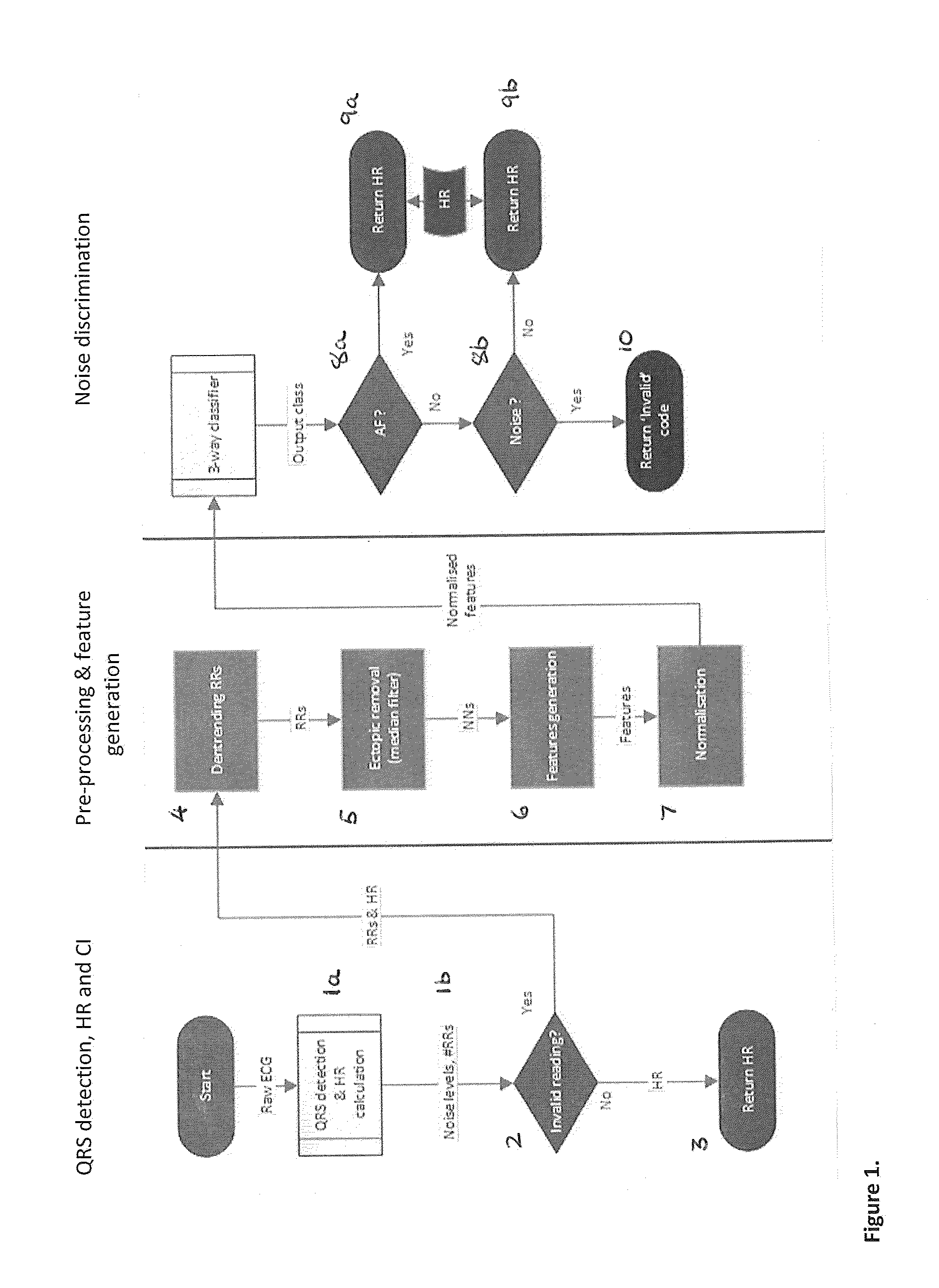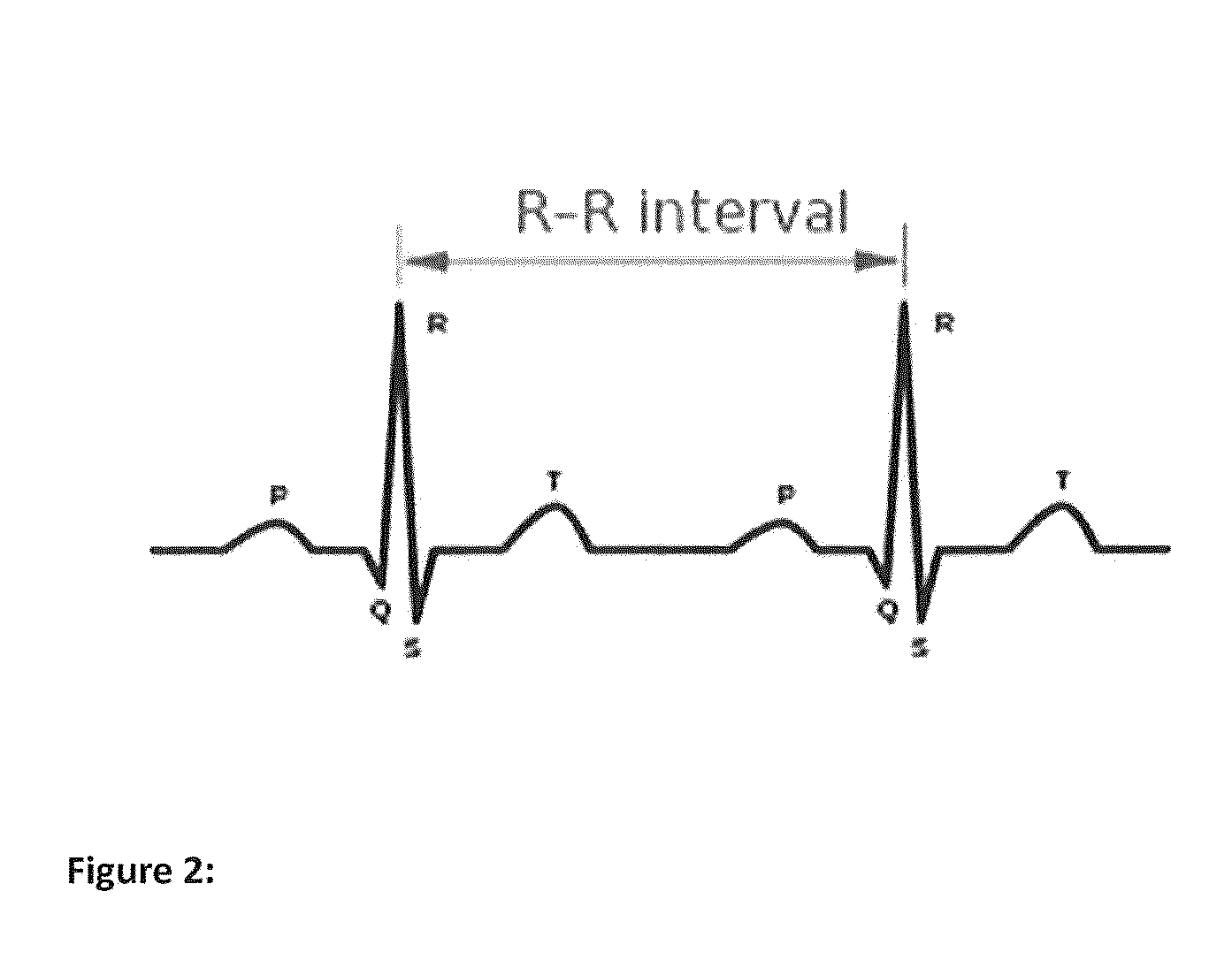Method for confidence level determination of ambulatory hr algorithm based on a three-way rhythm classifier
a technology of confidence level and hr algorithm, which is applied in the field of confidence level determination of ambulatory hr algorithm based on a three-way rhythm classifier, can solve the problems of affecting the quality and/or reliability of processed physiological values, artifacts contaminating physiological signals (such as ecg) obtained from patients, and additional challenges to early warning monitoring technologies, etc., to achieve improved monitoring capabilities ecg, more confidence in processed physiological values, and low cos
- Summary
- Abstract
- Description
- Claims
- Application Information
AI Technical Summary
Benefits of technology
Problems solved by technology
Method used
Image
Examples
Embodiment Construction
[0044]FIG. 1 shows principal features of a method according to one embodiment of the present invention, which incorporates arrhythmia and noise detection techniques in determining the level of confidence in the calculated heart rate. More specifically, there are two stages in determining the level of confidence of the HR. The application of the second stage allows a larger proportion of heart rates to be recovered if the ECG segment is re-classified as AF or Normal, after having been classified as invalid in the first stage of determining the confidence level in the heart rate. Potentially, this will allow a notification to be triggered early if the recovered heart rates are out of the normal physiological range.
[0045]The principal stages of the method of FIG. 1 are as follows:
[0046]1. The patient's heart rate HR (eg the RR interval shown in FIG. 2) is determined (1a) for a segment of the patient's ECG signal. The RR intervals may be extracted from the ECG segment using any suitable...
PUM
 Login to View More
Login to View More Abstract
Description
Claims
Application Information
 Login to View More
Login to View More - R&D
- Intellectual Property
- Life Sciences
- Materials
- Tech Scout
- Unparalleled Data Quality
- Higher Quality Content
- 60% Fewer Hallucinations
Browse by: Latest US Patents, China's latest patents, Technical Efficacy Thesaurus, Application Domain, Technology Topic, Popular Technical Reports.
© 2025 PatSnap. All rights reserved.Legal|Privacy policy|Modern Slavery Act Transparency Statement|Sitemap|About US| Contact US: help@patsnap.com



